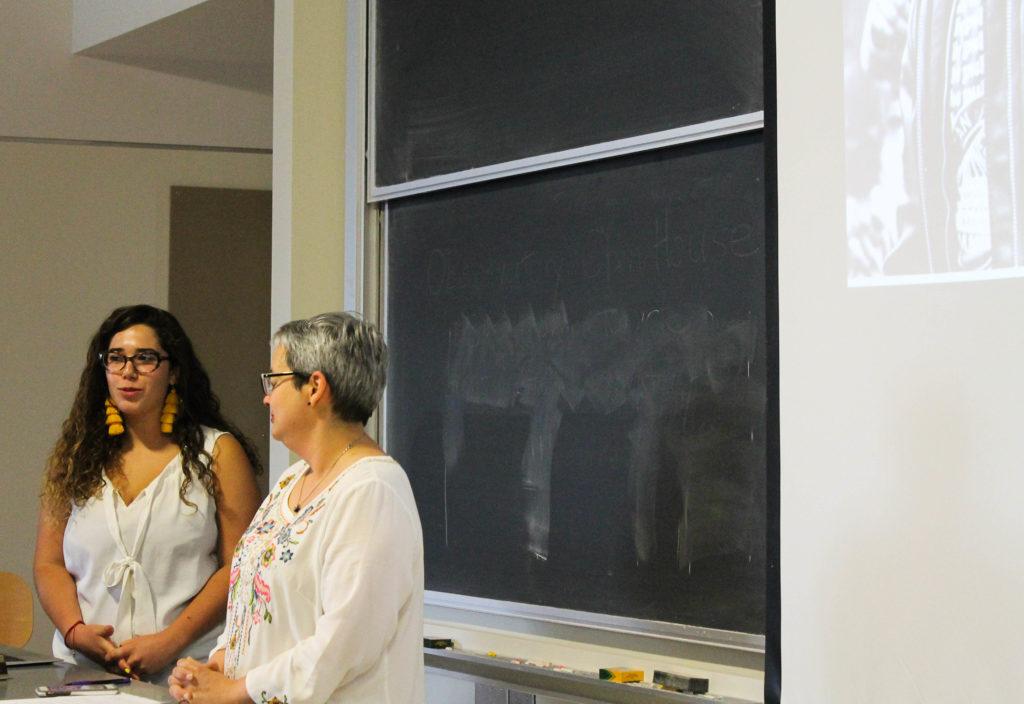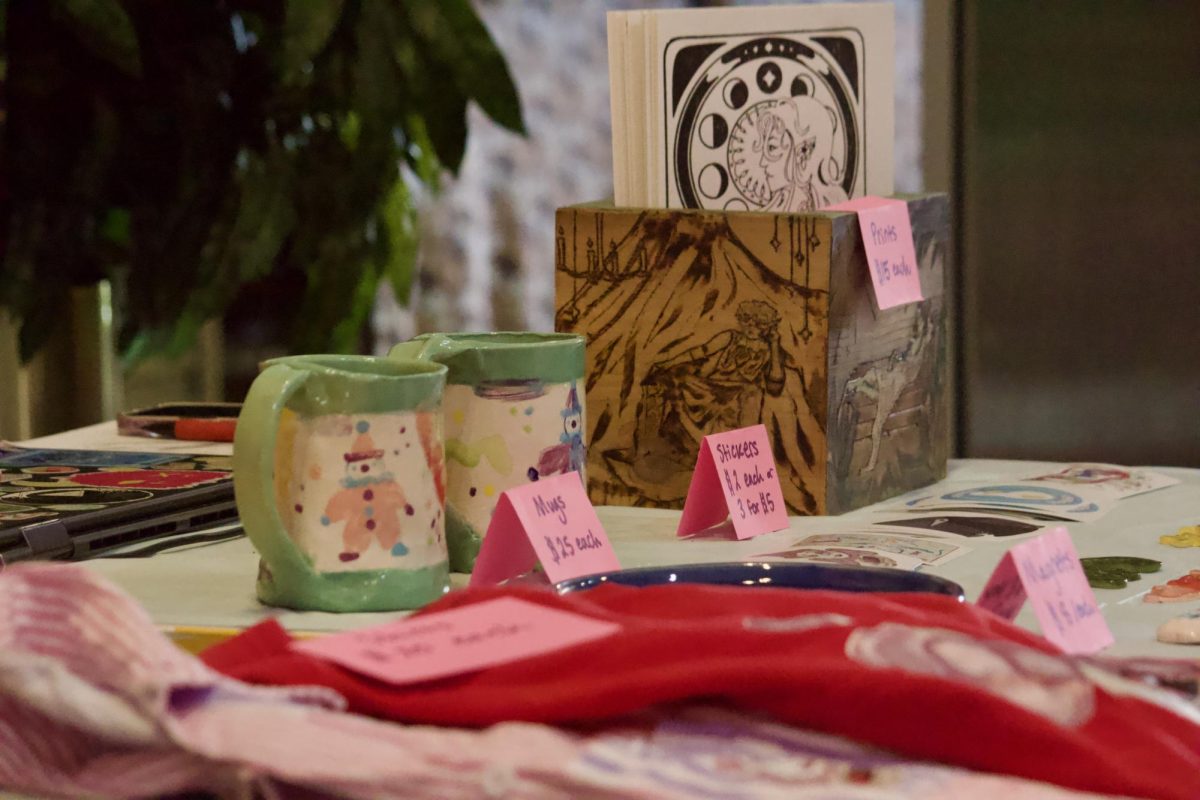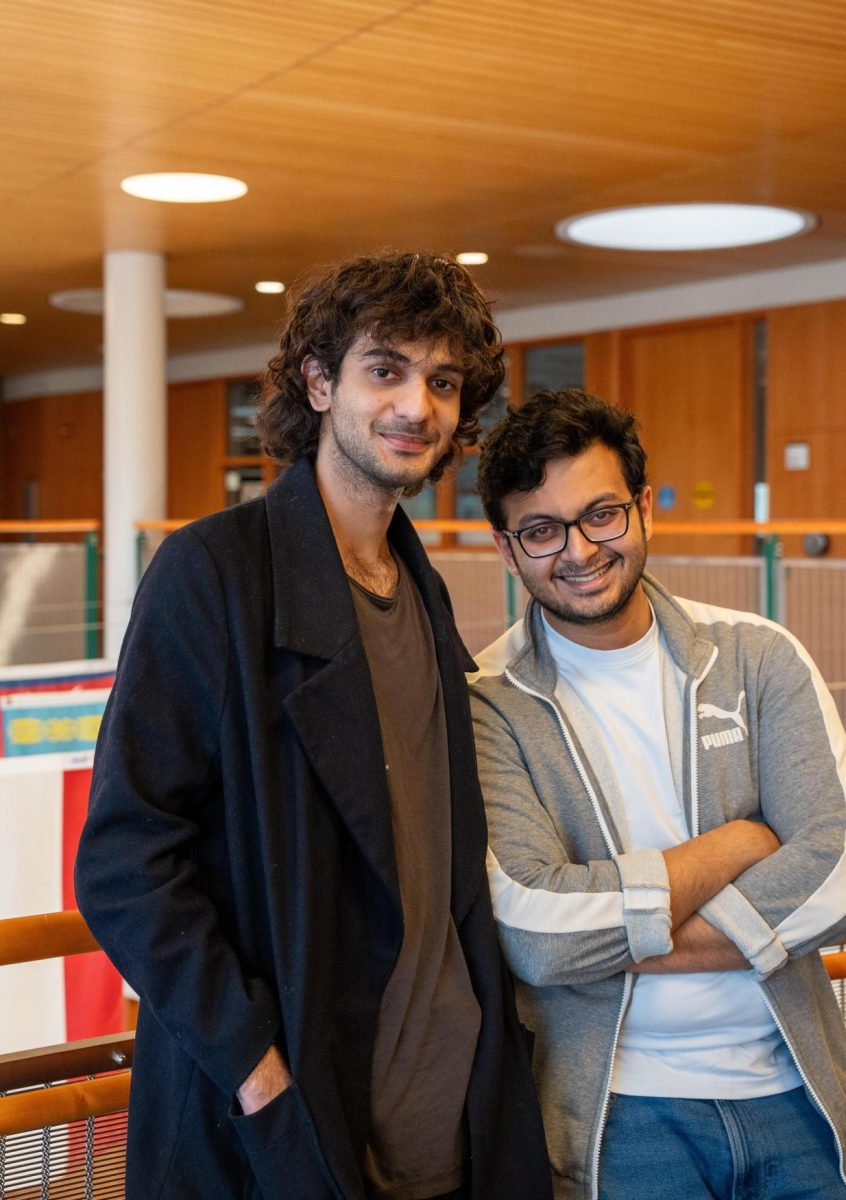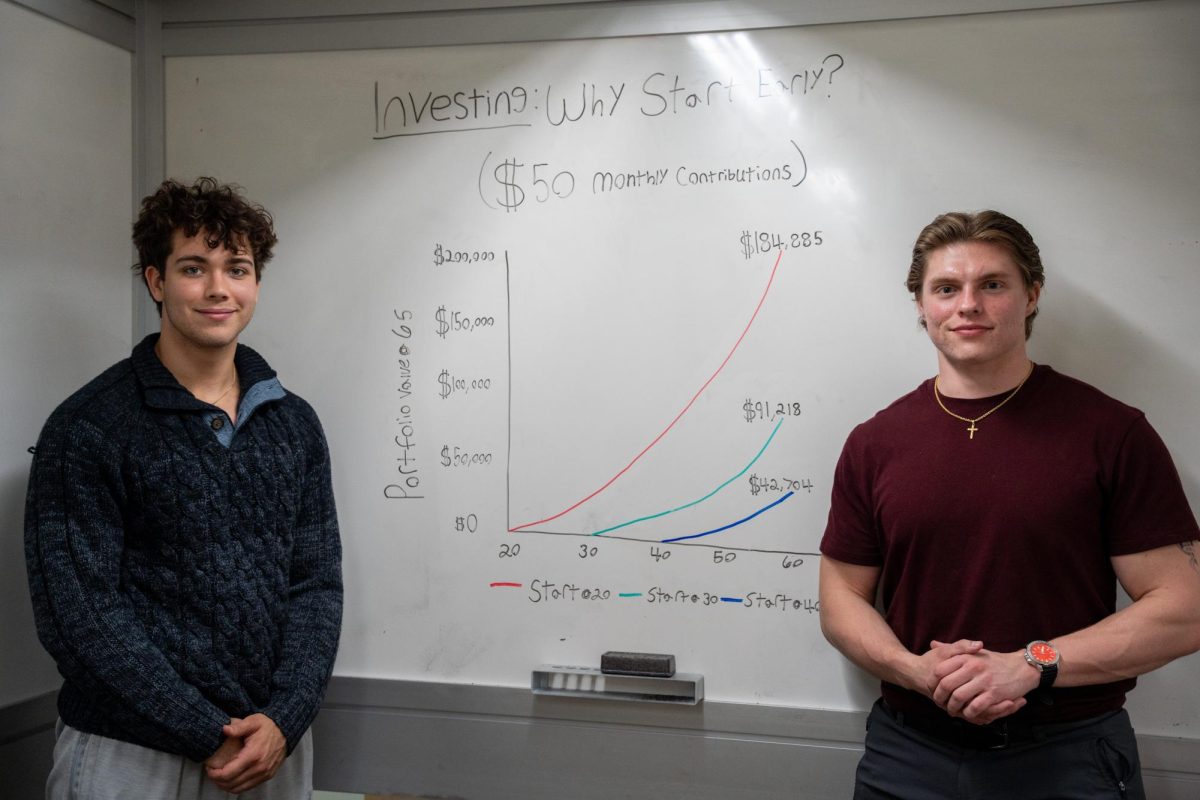
detail why natural disasters have a devastating affect on Puerto Rico and the Caribbean. Professor Fredo Rivera not pictured. Photo by Candace Mettle.
On Sept. 20, 2017, Hurricane Maria made landfall on Puerto Rico and wreaked havoc and destruction across the island. The damage was catastrophic, and millions of people across the country are still struggling to recover in the aftermath of the event.
This week, the Wilson Center hosted a panel discussion entitled “Blue Tarps and Plátano Shortages: Puerto Rico After Hurricane Maria” in an attempt to open up a dialogue surrounding Hurricane Maria within the College community. Broadly, this event aimed to provide an interdisciplinary perspective into the “pretext that led to Puerto Rico’s vulnerability before the hurricane and the island’s recovery and healing process afterwards.”
This event was organized by Vivienne Kerley-de la Cruz ’20 in partnership with the Wilson Center for Innovation and Leadership and the department of Global Development Studies. Kerley-de la Cruz has a strong personal connection to Puerto Rico, as she has family that lives on the island and spent the summer of 2017 working for a local art museum on a project that strives to promote community engagement in neighboring areas. In the wake of the hurricane, Kerley-de la Cruz looked to continue her work within her community and give back to those who had been affected, and received funding through the Wilson Center to go back to Puerto Rico over winter break.
In an email to The S&B, Kerley-de la Cruz wrote, “After Hurricane Maria, I began trying to design a project in partnership with the museum and El MAC en El Barrio [the museum’s community project] to bring some aid to the communities I was so deeply connected to. I hoped that this work would help the relief effort in a way which might ultimately reach rural areas such as those where my grandparents lived.”
Of the panel, Kerley-de la Cruz wrote that she “would love for my peers to understand the greater crisis in Puerto Rico which allowed for Maria to be so devastating as well as what is happening on the island to heal.”
In addition to introducing Kerley-de la Cruz’s work to the campus community, the panel discussion also featured Professor Tess Kulstad, anthropology, and Professor Alfredo Rivera, art history. Kulstad and Rivera helped to provide an interdisciplinary perspective to the discussion, and although they both have different academic backgrounds and specialties, they also share a personal connection to Puerto Rico and the Caribbean.
Kulstad has done extensive work surrounding disasters. Having grown up in the Dominican Republic, she is personally familiar with the response to hurricanes in the region.
“My role is to contextualize Vivienne’s project … to contextualize from my own experience, but also from the point of view of anthropology and disasters,” Kulstad explained. She emphasized the idea that “disasters are not natural … but rather they are the result of the interaction between the natural world and human action or inaction.”
Rivera, who is of Puerto Rican descent, specializes in Caribbean art, architecture and visual culture. In the discussion he gave a brief overview of the social and economic context in Puerto Rico before and after Hurricane Maria. In particular, he illustrated the role that Puerto Rico’s history of colonization has played in the island’s relationship to Hurricane Maria.
“It is the peculiar colonial condition of Puerto Rico that exacerbated the devastation felt throughout the island,” Rivera wrote in an email to The S&B. Professor Rivera also explained how Puerto Rico’s current economic crisis has resulted in a mass migration of Puerto Ricans to the United States, a trend which has only continued to increase in the wake of the hurricane.



















































